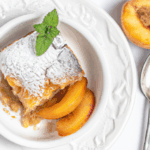How To Substitute Gluten Free Cornstarch For Flour In Recipes

Creating gluten-free versions of your favorite recipes can be a fun and rewarding challenge in the kitchen. If you’re looking to substitute gluten-free cornstarch for flour in your recipes, you’ve come to the right place! Cornstarch is a versatile ingredient that can be used as a thickening agent or to add lightness to baked goods. By following a few simple tips, you can easily adapt your recipes to be gluten-free without sacrificing flavor or texture.
How To Substitute Gluten-Free Cornstarch For Flour In Recipes
Ingredients:
– Gluten-free cornstarch
Instructions:
1. Determine the Amount Needed: When substituting cornstarch for flour in a recipe, it’s essential to understand the ratios. Cornstarch is a powerful thickener, so you typically need to use less of it compared to flour. As a general rule of thumb, you can substitute 1 tablespoon of cornstarch for every 2 tablespoons of flour. However, for recipes that require a significant amount of flour, you may need to adjust the proportions accordingly.
2. Adjust the Liquid Content: Since cornstarch absorbs liquid differently than flour, you may need to make adjustments to the other ingredients in your recipe. If your original recipe calls for mixing flour with liquids, such as water or milk, reduce the amount of liquid by about 25% to account for the cornstarch’s thickening properties. Conversely, if your recipe calls for adding cornstarch directly to the liquid, you may need to increase the liquid amount slightly.
3. Mix Thoroughly: When incorporating cornstarch into your recipe, be sure to mix it thoroughly to avoid lumps. You can either whisk the cornstarch with a small amount of liquid to create a slurry before adding it to the rest of the ingredients, or you can sprinkle it directly into the recipe while continuously stirring to prevent clumping. Cornstarch works best when it is evenly distributed throughout the mixture.
4. Baking Considerations: When using cornstarch in baked goods, keep in mind that it does not provide the same structure and elasticity that gluten-containing flours do. To achieve the desired texture, you may need to add other ingredients, such as xanthan gum or guar gum, to mimic the properties of gluten. Additionally, consider using a blend of gluten-free flours to create a more balanced texture and flavor in your baked goods.
5. Test for Consistency: As with any recipe substitution, it’s crucial to taste and adjust as you go. Start by adding a small amount of cornstarch and gradually increase the quantity until you achieve the desired consistency. Keep in mind that cornstarch thickens as it cooks, so allow your dish to simmer for a few minutes before making any final adjustments.
6. Enjoy Your Gluten-Free Creations: Once you’ve mastered the art of substituting gluten-free cornstarch for flour in your recipes, the possibilities are endless! Whether you’re thickening sauces, gravies, or soups, or baking delicious cakes, cookies, or muffins, cornstarch can be a valuable addition to your gluten-free pantry.
By following these simple steps and experimenting with different recipes, you can confidently substitute gluten-free cornstarch for flour in your favorite dishes. Embrace the creativity and flavors of gluten-free cooking, and enjoy the delicious results!